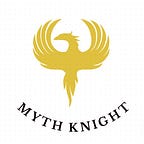Unbroken: The Faith of Prahlada
Does loyalty deserve punishment in the hands of the unjust? Or is loyalty always worth pursuing? Hundreds of years ago, Hinduism, with the story of Prahlada, taught that loyalty had its justice.
Prahlada was the son of Kayadu and Hiranyakashipu, an Asura and the king of Daityas. In Hinduism, Asuras are the power-seeking evil supernatural beings, which are the enemies of benevolent Devas, all good supernatural beings.
Prahlada was known for his devotion and piety to Vishnu, the “The Preserver” god who creates, protects and transforms the universe. Vishnu is one of the principal deities (Trimurti) along with Shiva and Brahma.
The starting point of the story is Prahlada’s loyalty to Vishnu. When Prahlada was still in his mother’s womb, he heard chants from Narada. Being a mind-created child of the creator god Brahma, Narada was a musician and storyteller who travelled and carried the news.
Prahlada was taught as a child by Narada to devote himself to Vishnu. But his father Hiranyakashipu did not approve of his devotion and tried to divert him from believing in the protector god. Though, Prahlada kept believing in him despite his father's warnings.
After warning him many times, one day, Hiranyakashipu poisoned his son to kill him but Prahlada survived. He then put his son in a narrow place with elephants and tried to have him trampled by the elephants. The elephants made way for him to pass and he survived again. Filled with rage, Hiranyakashipu put him in a chamber full of snakes but the snakes gathered together and formed a bed for him.
Meanwhile, Hiranyakashipu declared himself as the one and only god and forced his subjects to worship him. But Prahlada’s devotion to Vishnu grew stronger and started to teach everyone that the only god to worship was Vishnu. Learning that, Hiranyakashipu lost his temper and had Prahlada thrown into a valley to starve to death. There, Prahlada prayed to Vishnu to save him. Hearing his prayer, Vishnu again saved him from the valley.
As a last resort, Hiranyakashipu brought his sister Holika, also known as Simhika, to his palace. Holika was given the power to be flame resistant so that any fire could not harm her. Hiranyakashipu put Prahlada on her aunt’s lap and surrounded the two of them with woods.
Then, they set the two in flames and Prahalada prayed to Vishnu at that moment. Hearing him one more time, Vishnu saved Prahlada but Holika, sacrificing herself, burned to death.
Unable to stand it any longer, Vishnu transformed into his fierce avatar of Narasimha, the lion-headed human. Avatars are material appearances of Hindu gods on earth. Narasimha emerged from a stone and then grabbed Hiranyakashipu but the king had a power that made him immortal under the following conditions:
cannot be killed off by anything born from a living womb, neither be killed by a man nor an animal, neither during the day nor at night, neither indoors nor outdoors, neither on land nor in the air nor in water and of no man-made weapon.
So, Narasimha (neither human nor animal), took him to a doorstep (neither indoors nor outdoors), put him onto his lap (neither land, water nor air), at dusk (neither day nor night) and killed the king with his lion claws (neither a handheld weapon nor a launched weapon).
After Hiranyakashipu’s death, Prahlada became the king of Daityas. Being a merciful and fair king, he continued telling people that Vishnu was the divine god to be worshipped and told them how benevolent and powerful he was.
Even today, we see the traces and even celebrations of Prahlada’s dedication and Holika’s sacrifice.
For example, there is a festival called Holi which Holika is commemorated at the end of the winter, every year in India. Also known as the Festival of Spring, the Festival of Colours or the Festival of Love, the festival symbolizes the triumph of good over evil. Every spring, people gather, make a bonfire and perform some rituals. Then, they throw colorful pigments at each other. Thousands of people join the festival every year.
